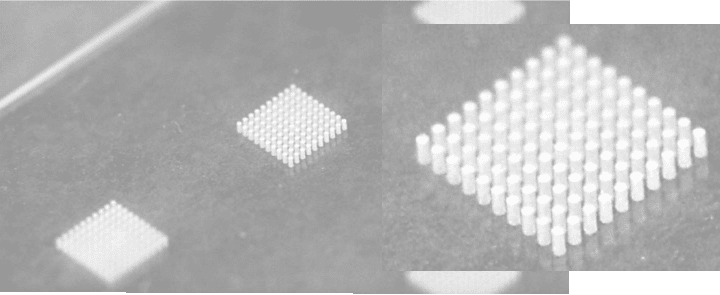Micromachining is a process used to create highly precise and intricate pieces on a micron level scale. These parts are machined according to a high level of accuracy to fit their specific function and match the machine or system in which they are to be placed. In this post, we’ll cover some of the most common materials used in micromachining.
Glass
We’d be remiss if we didn’t call our our specialty when it comes to which types of materials are used in precision micromachining: Glass. Glass micromachining is a relatively new technique in the industry, but it has such great value. Glass parts can be manufactured with precision, while remaining strong, are re-usable, and can be cleaned easily. For experimental and medical application, glass microfabricated parts have the added benefit of allowing the researcher to view the experiment and results in real time, rather than waiting for an analysis system to give them a report. Glass micromachining is definitely a technology worth exploring if you’re in the medical, aerospace, or microelectronic industries.
Click the link to learn about our glass microfabrication technology. Then connect with one of our engineers to submit your design for a free consultation.

Stainless Steel
Stainless steel is one of the most popular raw materials used for micromachining. This material is favored for its strength and resistance to corrosion over time. One of the benefits of stainless steel is that it can be welded vacuum tight. Stainless steel is a very versatile material and based on the alloy, or grade, of the material will determine the price, availability, and versatility of the micromachined part.
Aluminum
Aluminum is another part that has many advantages when it comes to precision micromachining. Aluminum is lightweight, easy to machine, non-magnetic, corrosion resistant, and very inexpensive. Aluminum is making its way past steel as its benefits outweigh those of traditional steel. Aluminum an be machined to tight tolerances and can b plated with many different materials that make it harder, or more conductive, as a cheaper alternative to using steel, stainless steel, or copper.
Copper
Copper is another metal highly prized for precision machining capabilities. Copper provides the benefits of versatility, durability, electrical conductivity, and natural corrosion resistance. Copper doesn’t hold tolerances as well as aluminum however it is a much better electrical conductor especially when plated.
Titanium
Titanium is a highly prized and useful metal for micromachining. Titanium is very resistant to heat and corrosion and has the most significant strength to weight ratio of any metal. It is also lighter in weight, inert and biocompatible, making it suitable for a wide range of applications from aviation to medical tools. However, one of the drawbacks of titanium is that it can be quite difficult to machine and the price of the material. If you require titanium parts machined, consider partnering with an expert micromachining engineer.
Plastics
Plastics can be used as an inexpensive, non-metal, non-conductive raw material for machining. Because plastics are inert and can be modified to fit a range of different properties, plastic machined parts are used in a variety of industries including medical, electronics, industrial, and scientific uses. Known for its smooth of injection molding and extremely low cost.
Citrogene: Glass Micromachine Manufacturers
Citrogene is the leading glass microfabrication expert in the world. We have the skills, knowledge, tools, and expertise to execute your custom design to perfection. When it comes to producing microfabricated devices, pieces, or instruments, there is only one trusted microfabrication partner to consider: Citrogene. Contact us today to learn more about our glass microfabrication capabilities.
